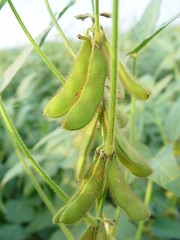 The answer in
1939
turns out to be about the same as in
2010:
minority shares by its own executives, and the majority by, well:
The answer in
1939
turns out to be about the same as in
2010:
minority shares by its own executives, and the majority by, well:
Last week’s survey of stockholders—lavish to the point of including pictures of “typical” Monsanto stockholders in the “typical” city of Cincinnati—was frankly designed to prove that Monsanto is not owned or run by any of “America’s 60 Families.”So, mostly funds in 1939. And 71 years later, it’s even more so. Continue readingOutstanding as of June 1, 1938, were 1,241,816 common shares held by 4,300 men, 4,084 women, 2,708 trusts, groups, institutions. Mr. Queeny holds only 3.4% has beneficial interest in about 4.5% more through relatives and trusts. One officer of the company owns 1.47%, no others own more than .25%.
The magazine named as “stockholders, once removed,” students in 42 universities which together own 1% of Monsanto and the 25,000,000 policyholders in 72 insurance companies which together own 3%. Tucked away in a graph was the fact that 81% of the company’s shares is owned in blocks of 101 or more shares ($102-to-$104 a share last week).








